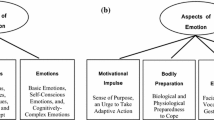Summary
In the ‘Second Analogy’, Kant provides a deductive argument as proof that ‘Every event has a cause’. This claim, GLC is the conclusion of a valid argument consisting of five premises P 1 ... P 5, which jointly imply GLC. The premises P 1 ... P 5 are true, empirical statements about successive perceptual sequences when they serve as ground for correctly saying s 1 ‘This is an event’, or s 2 ‘This is a new happening’, or s 3 ‘I perceive an objective successive sequence of percepts’.
However, unlike these premises or even s type statements, Kant's conclusion, GLC, is not a statement that is asserted within empirical or experiential discourse. No one can say on purely observational grounds that every event has a cause since no one can be a witness to every event for all time. But as an unstated claim whose truth is a necessary condition for the truth of P 1 ... P 5 (p 1 ... p 5 jointly imply GLC), GLC is a presupposition. Furthermore, GLC is true without doubt since the premises that presuppose it are obviously true under the present minimal interpretation. Thus, while GLC is not established by observation of constant uniformities, as Hume correctly believed, neither, is its truth merely presupposed by Kant, who deductively demonstrated the truth of this important presupposition in answer to Hume.
Similar content being viewed by others
Rights and permissions
About this article
Cite this article
Smith, W. Kant and the General Law of Causality. Philosophical Studies 32, 113–128 (1977). https://doi.org/10.1007/BF00367722
Received:
Issue Date:
DOI: https://doi.org/10.1007/BF00367722



